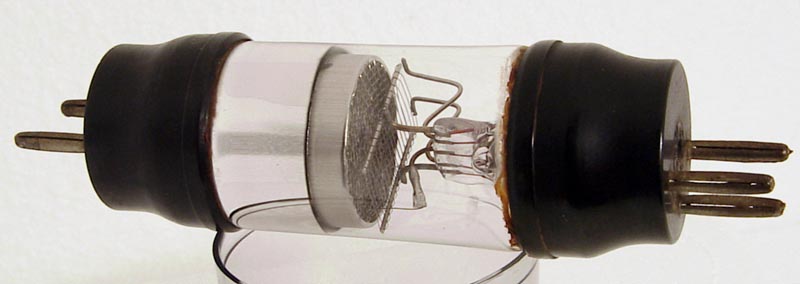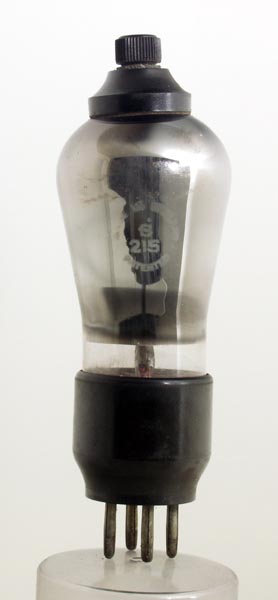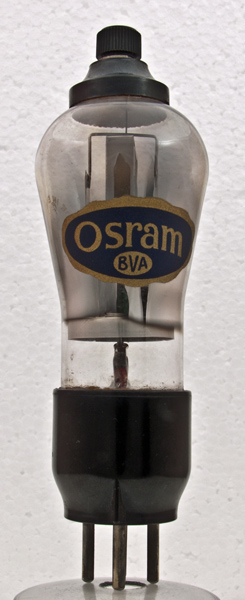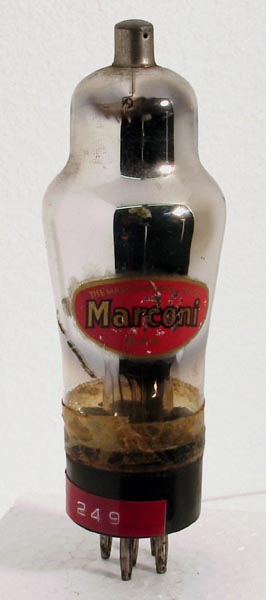|

The landmark S625 screened grid valve
The S625 Introduced by M-OV in 1927 was the first screen grid valve. It featured a thoriated tungsten filament and a double ended construction that made fitting it into a chassis on a production line for mass produced receivers somewhat complicated and time consuming.
The first upright screened grid valve was the S215. This features the anode taken to the top cap and a 2 Volt barium process filament as well as a short length of straight glass tube before the envelope flares. The lower tubular part of the envelope made a through chassis mounting possible for professional equipment if required.
The next development was the MS4 an indirectly heated version of the S215. We have an experimental valve Type E351 that appears to be the prototype of the MS4. The lower tubular part of the envelope is still present in the E351 and the MS4. This would give flexibility to professional designers who may have still placed the valve through a hole in a chassis compartment.
The last in the series was the VMS4 where by adopting a variable pitch grid winding a variable-μ characteristic was introduced for superhet receivers with AGC control voltages. The VMS4 was introduced in 1931.
The American market dislikes the top connecting anode for safety reasons and introduced the control grid to the top connection. Subsequently with the KT valves and the universal adoption of the pentode when the Philips patents lapsed, the SG valves ceased to be used for new designs.
  
The S215, MS4 and VMS4 screened valves
|